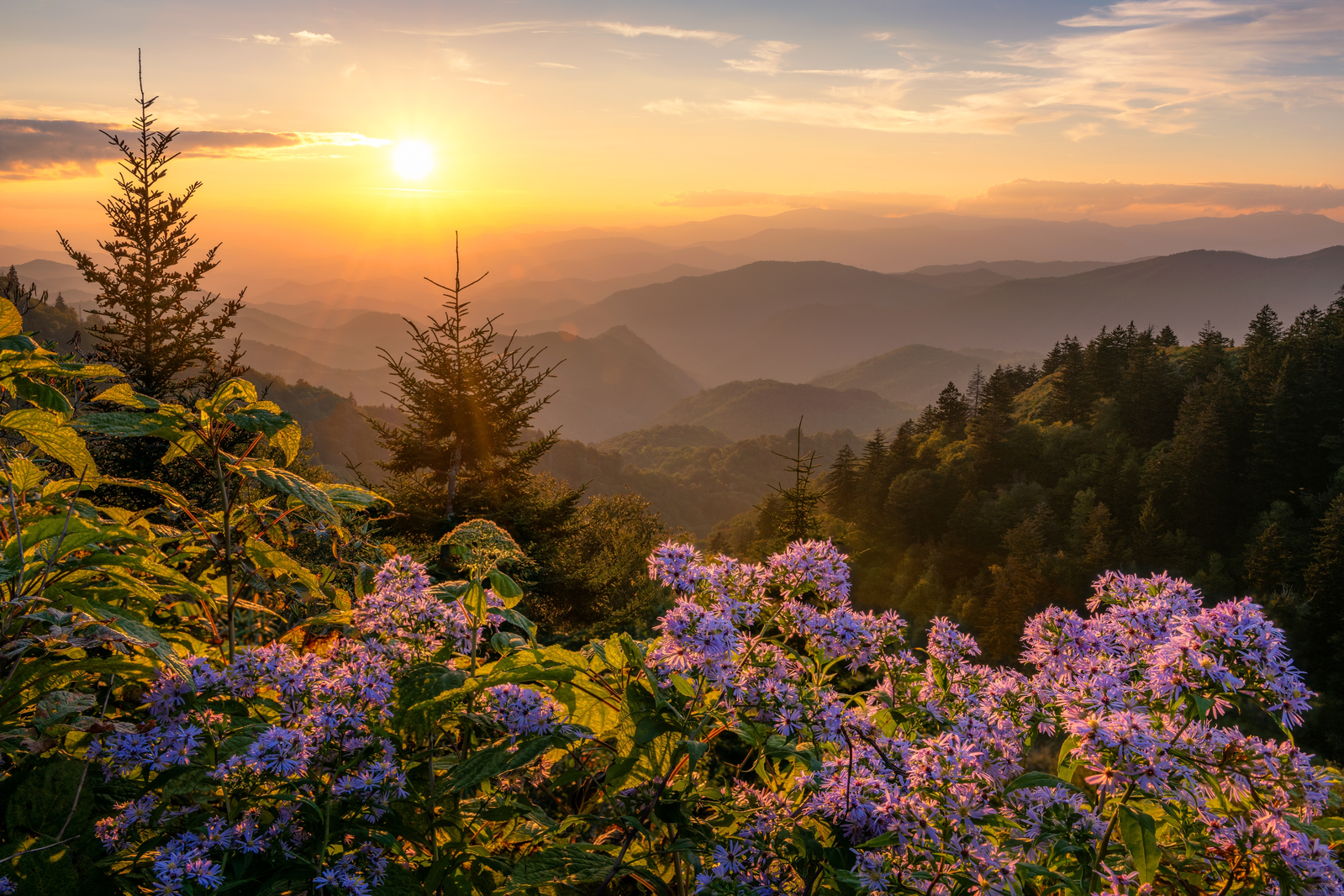Two of the Great Smoky Mountains National Park’s most precious resources are often taken for granted: quiet and darkness. However, anyone who lives in an urban area knows that these commodities are actually in short supply outside of national parks. City dwellers will be hard pressed to find a spot where they can enjoy the sounds of nature without any competing noises or admire the constellations in the majestic night sky.
The Smoky Mountains of Tennessee are one of the darkest areas in the eastern United States, making them ideal for stargazing. Likewise, the national park’s backcountry is full of peaceful spots where birdsongs and rushing streams are the only music you will hear. Unfortunately, increasing levels of light and noise pollution threaten to erode the serenity of the Smokies.
According to the International Dark-Sky Association, if present trends continue, no dark skies will exist in the U.S. by the year 2025. Prospects for noise free areas are similarly grim. Nevertheless, the National Park Service is not taking the issue lying down. In a recent cover story, the Knoxville Mercury investigated how the NPS is tackling noise and light pollution in the park. Visit My Smokies has summarized highlights from the article below.

Turning Down the Volume
When it comes to preserving quiet and darkness, the National Park Service actually has a special task force for the job. The appropriately named Natural Sounds and Night Skies Division (NSNS) has a Southeast branch that is headquartered at the Great Smoky Mountains National Park.
In 2006, researchers from the NSNS used special field microphones to capture the natural ambient sounds at a number of locations in the national park. The recordings showed that noise in Porters Creek went over its natural decibel range the least often, while noise in Cades Cove went over its natural decibel range the most often. Next year, the NSNS will return to the 2006 locations and other spots in the park to make more recordings and determine if noise pollution has increased over the last decade.
Back in the 1990s, some of the worst noise pollution in the Smoky Mountains of Tennessee came from low-flying helicopters that offered aerial tours of the park. To reduce the number of helicopters flying overhead, the state passed a law preventing air tour operators from using runways or heliports located closer than 9 miles from the national park’s boundaries.
Today, motorcycles without mufflers are the loudest offenders in the Smokies. While the National Park Service welcomes motorcycles with standard issue tailpipes, the bikes that lack mufflers can be heard from 10 miles away. To cut down on the sounds of roaring engines, the National Park Service is setting up stations that read a vehicle’s decibel levels, so bikers are more aware of the noise they are producing.

Shutting Off the Lights
Although the Great Smoky Mountains National Park may feel like a world apart during the day, at night, it is clear that the Smokies are surrounded by urban environments. Lights from neighboring cities permeate the air, while distant glows from Knoxville, Asheville, and even Atlanta can spoil the park’s darkness.
Light pollution obviously makes star gazing difficult, but it can also adversely affect the area’s wildlife. When human generated light enters the park, it disturbs the natural rhythms of nocturnal hunters like owls and confuses animals who use the stars and the moon to navigate, such as bats and moths. The artificial light may also impact salamanders in the Smoky Mountains, who breed at night.
To measure the darkness of the night sky, scientists use the nine-level Bortle scale. Class 1 skies are the darkest on the planet, while Class 9 skies are what you would find in a major city. According to the National Park Service, the Smokies would be classified as Class 4 for most the park. In the southwest corner of the park, the skies can even reach Class 3, but the northern areas closest to local communities are Class 5 – 6.
As part of their mission to protect the park’s night skies, the National Park Service is auditing its own lighting fixtures to see if there are opportunities to reduce light pollution at NPS run buildings. Once the audit is complete, ambassadors from the National Park will start to work with local communities to see how light from neighboring cities can be reduced. The Great Smoky Mountains National Park is also enlisting help from the International Dark-Sky Association, a leading advocate for clear night skies.
If you are a cabin owner or renter in the Smoky Mountain area, the Natural Sounds and Night Skies Division of the National Park Service suggests the following guidelines for cutting down on light pollution:
Light only if you need it.
Light only when you need it.
Aim light where it is needed.
Use appropriate color spectra. (Amber bulbs, typically below 2700 Kelvin)
Use the minimum amount of light necessary.

Choose energy efficient lamps and fixtures.
To learn more about the Smoky Mountains of Tennessee, check out our complete guide to the Great Smoky Mountains National Park!

















